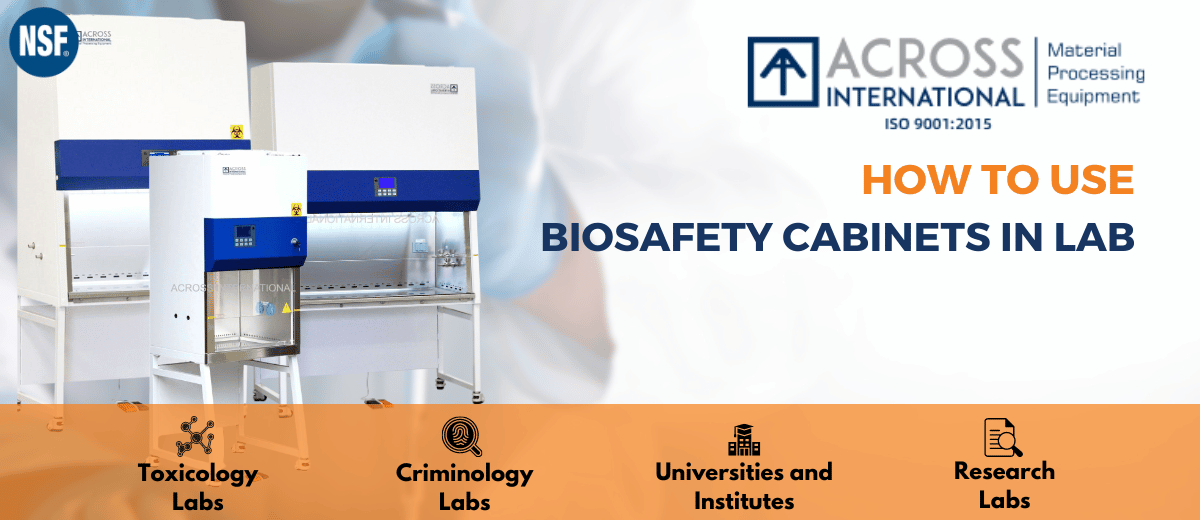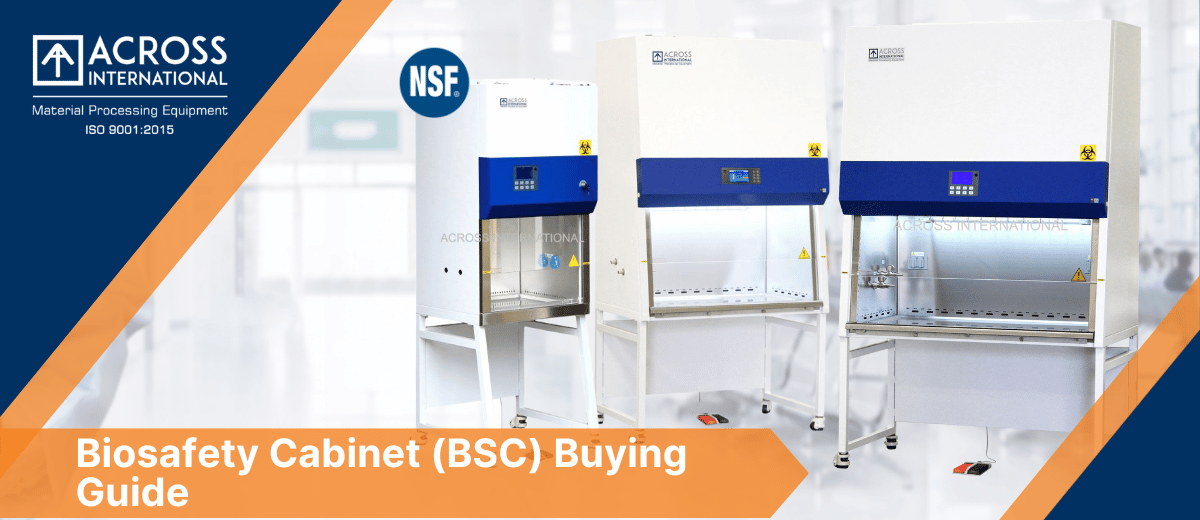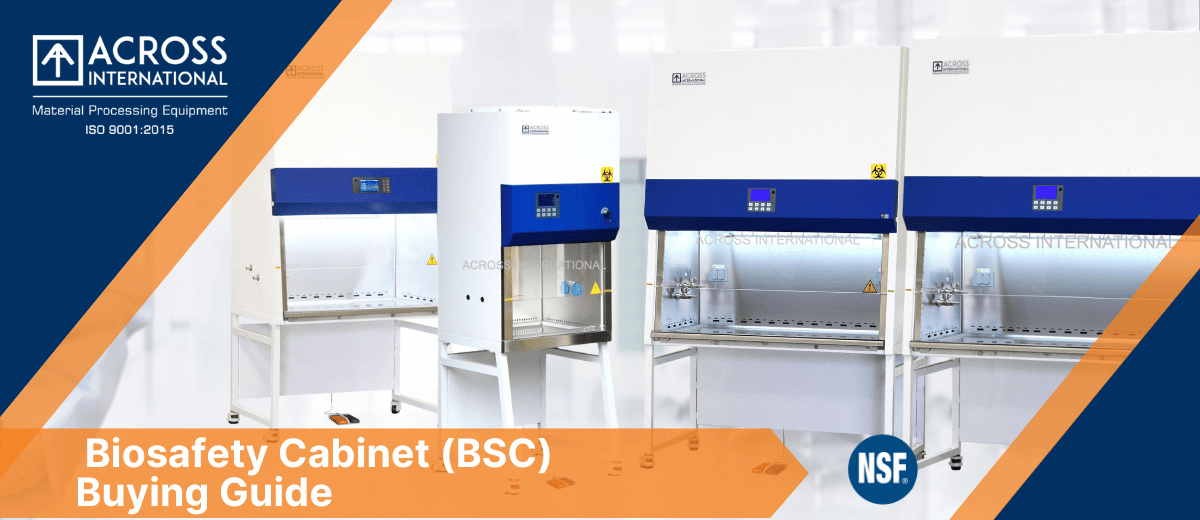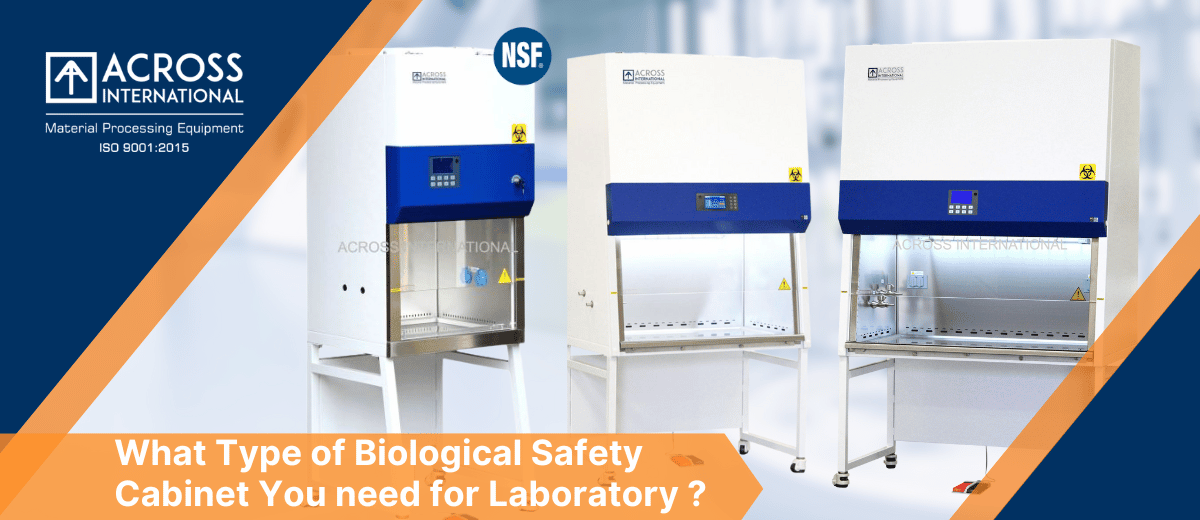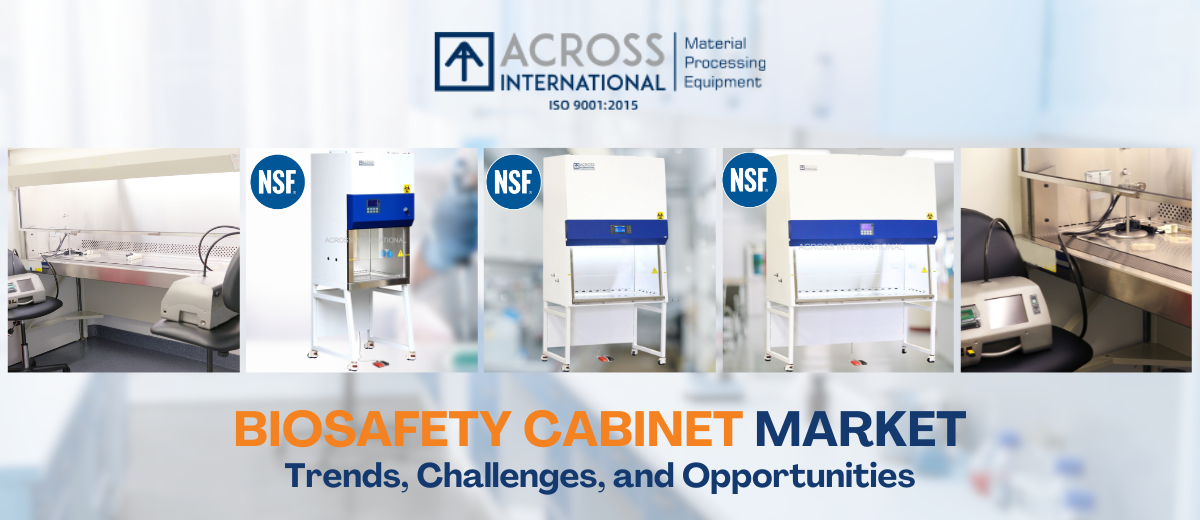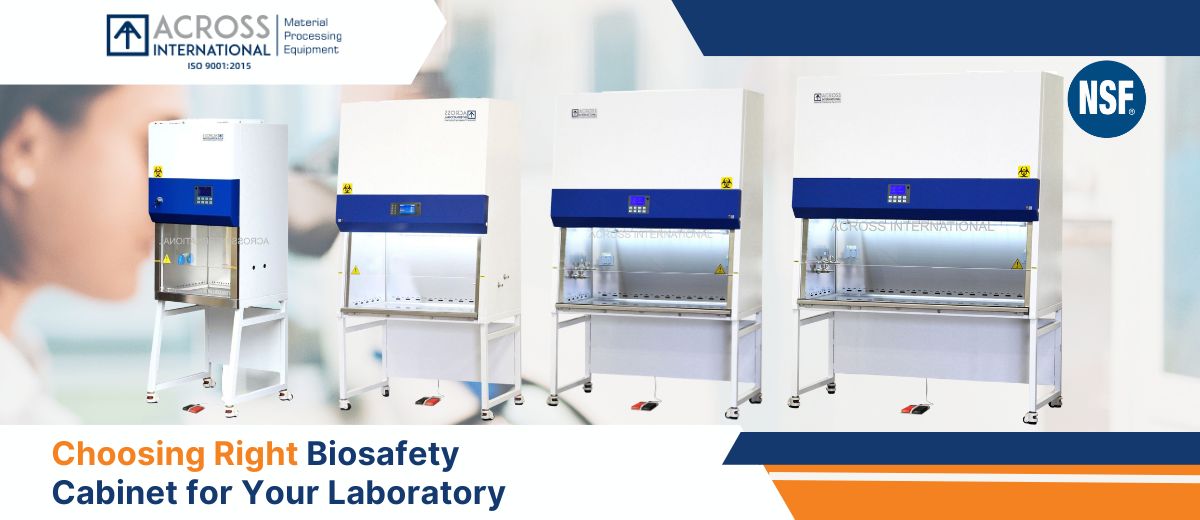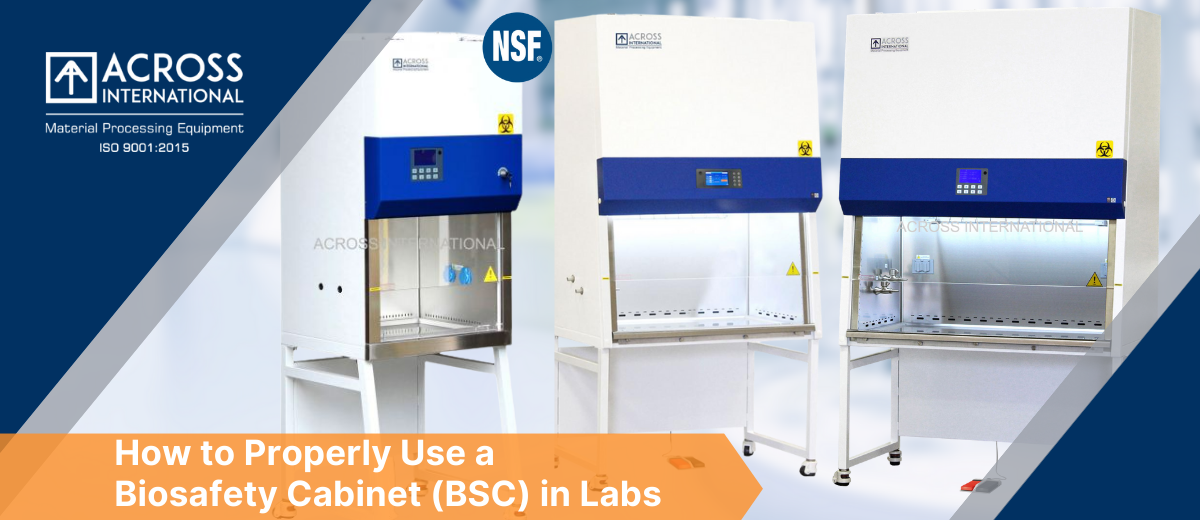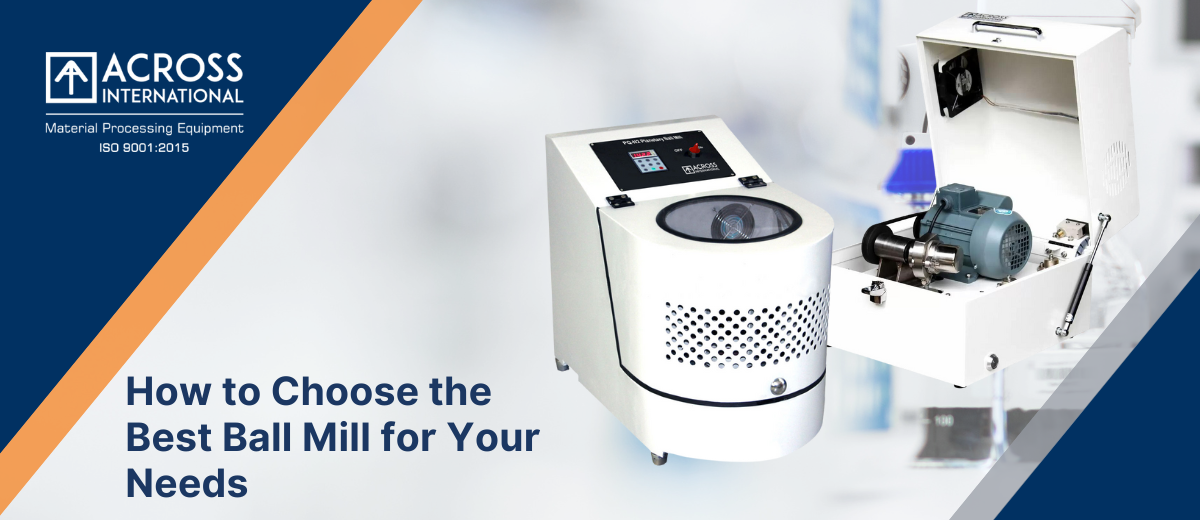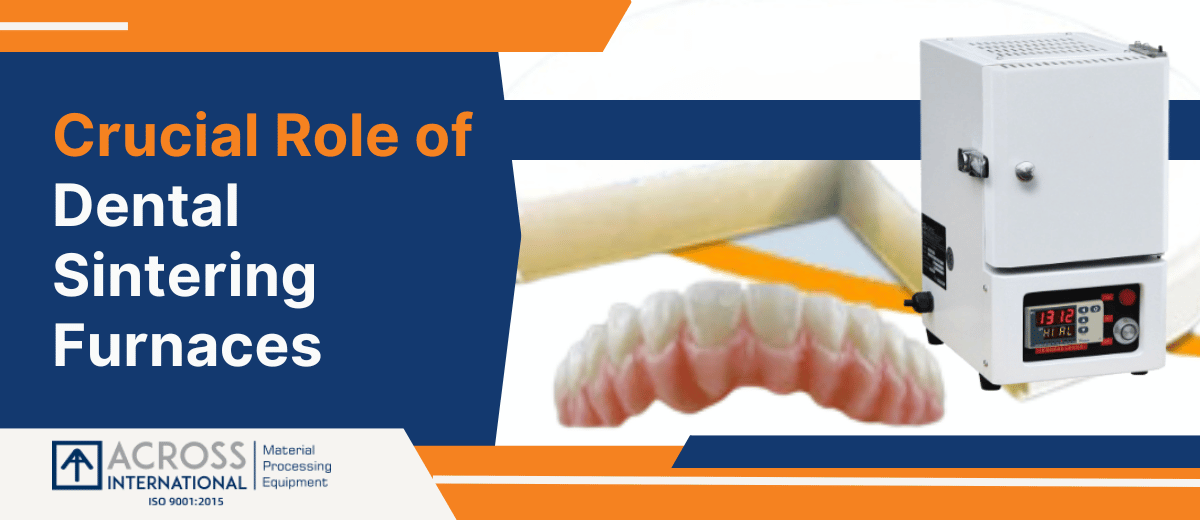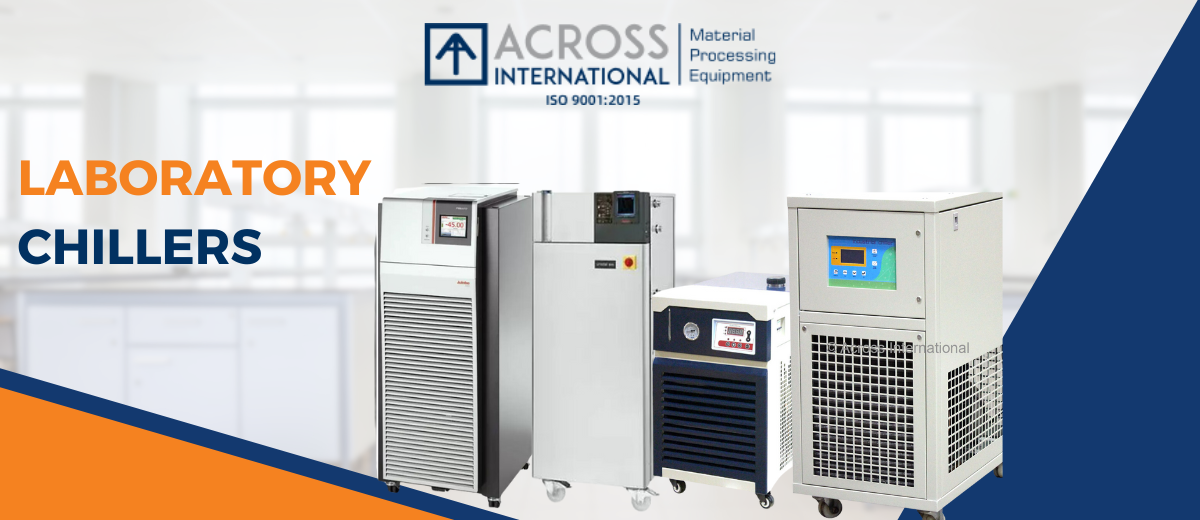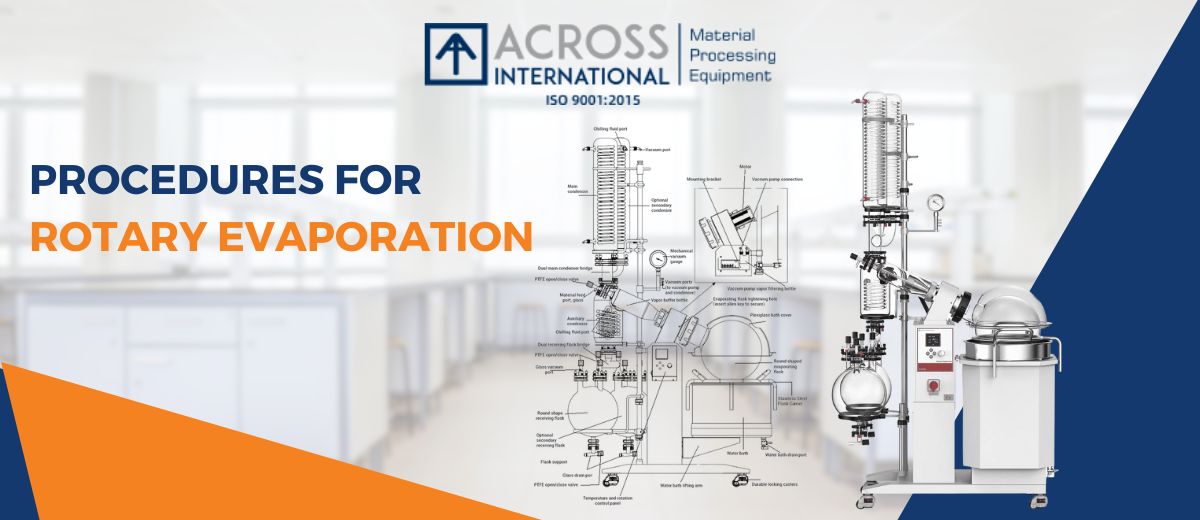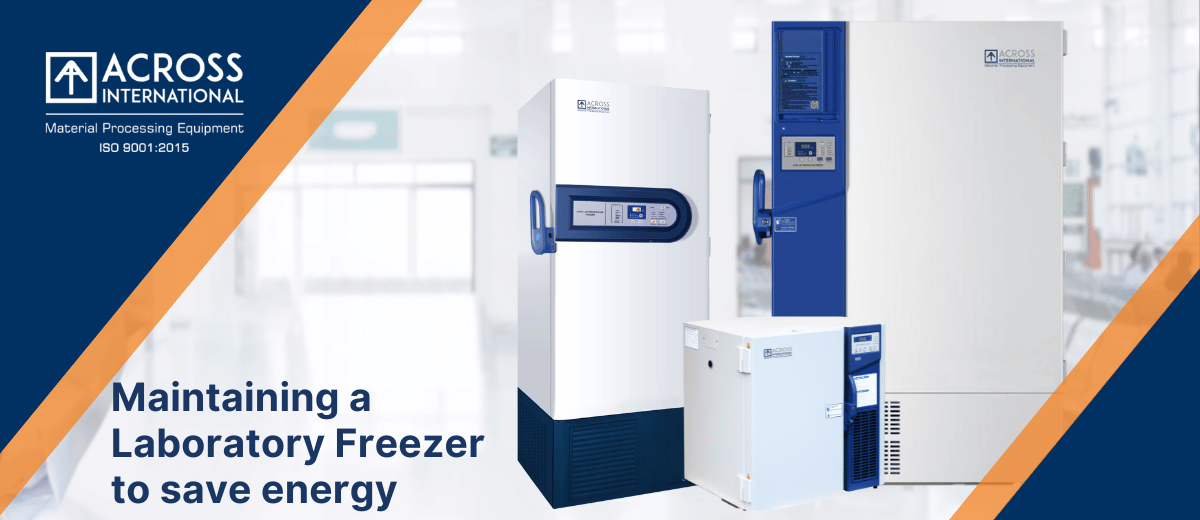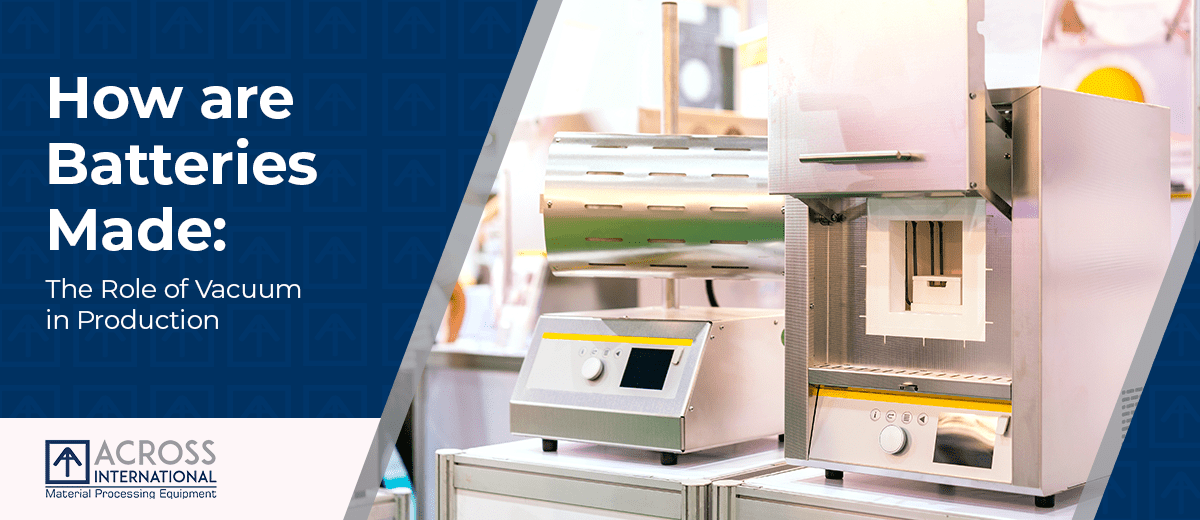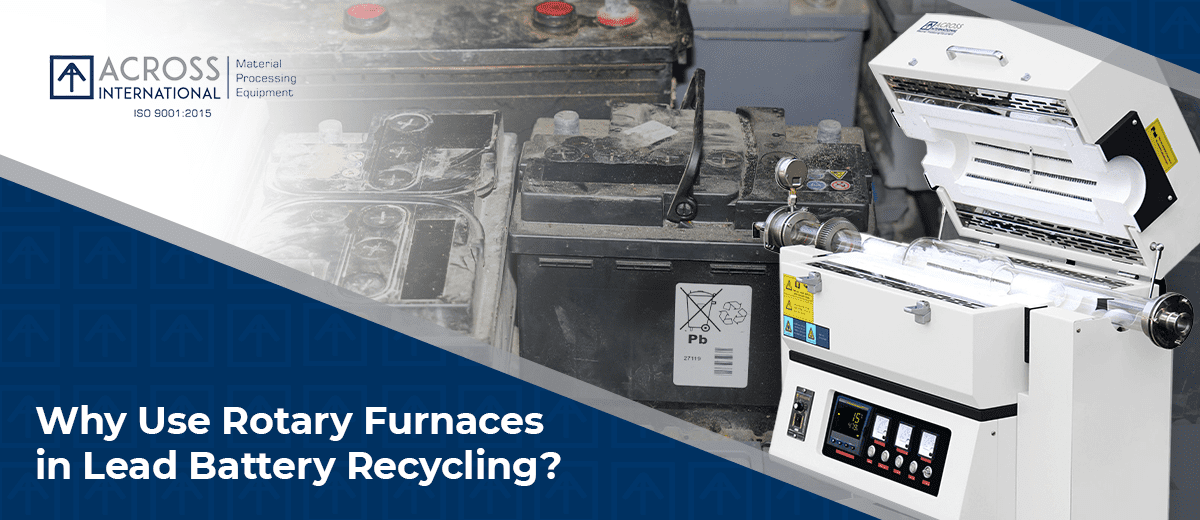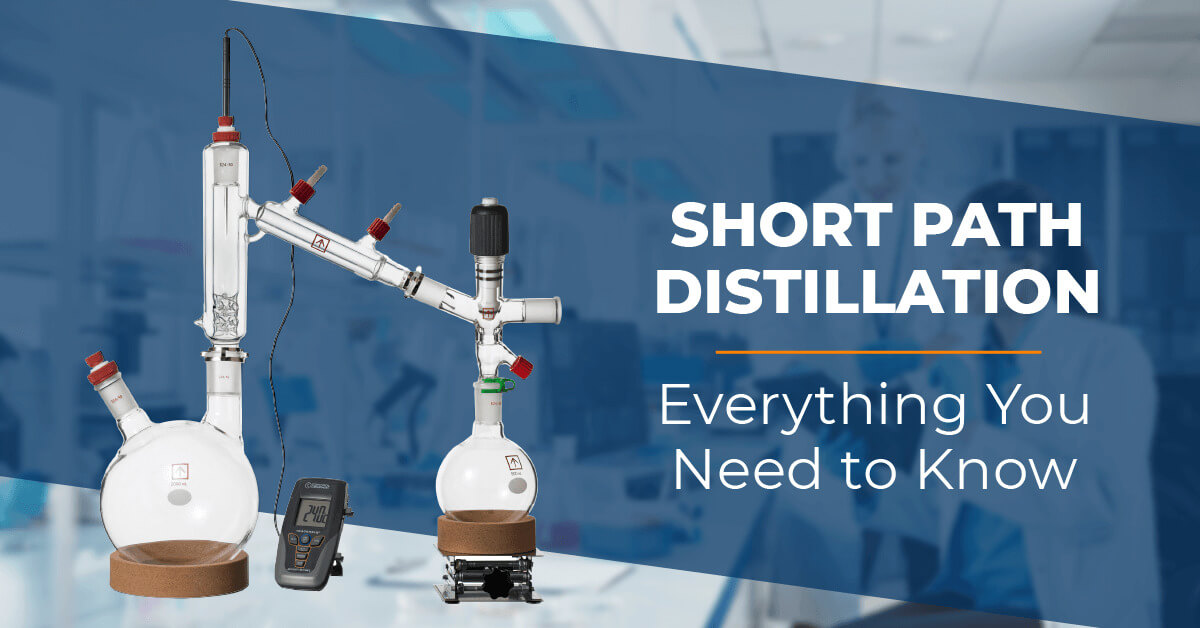We use cookies to make your experience better. To comply with the new e-Privacy directive, we need to ask for your consent to set the cookies. Learn more.
biosafety cabinets
-
Posted: 05 December, 2023Read more
How to use Biosafety cabinet in Lab
More than 2,000 years ago, Hippocrates noted that “there are many handicrafts and arts which cause those who exercise them certain pains and plagues”.1 He was probably thinking of
-
Posted: 16 November, 2023Read more
Biological safety cabinets must be certified annually for all areas working with materials categorized as biosafety level two (BSL2) and higher. Laboratories working at biosafety level one (BSL1) are strongly encouraged to certify their cabinets annually
-
Posted: 02 November, 2023Read more
Most laboratory equipment performs an active function. For example, a centrifuge separates liquids, and CO2 incubators grow tissue cultures. In comparison, role of a biosafety cabinet, while critical, might seem passive.
Biosafety cabinets (BSCs)
-
Posted: 26 October, 2023Read more
Biological Safety Cabinet or biosafety cabinets are enclosed, equipped with high efficiency particulate air (HEPA) filters, engineering control intended to protect laboratory workers, the laboratory environment . Biosafety Cabinet is primarily
-
Posted: 12 June, 2023Read more
Laboratory biosafety cabinets (BSCs) are critical equipment in research and healthcare settings, providing protection for personnel, samples, and the environment. Whether you're working in a lab or part of the industry, understanding the ins and outs of biosafety cabinets is crucial. This comprehensive guide aims to provide tech strategies, usage tips, and buying considerations for those involved in the field of biosafety cabinets.
Understanding Biosafety Cabinet Classes and Types:
Biosafety cabinets (BSCs) are categorized into different classes and types based on their design, functionality, and level of protection they provide. Here are the three main classes of biosafety cabinets:
Class I Biosafety Cabinets
Class I BSCs provide personnel and environmental protection but do not offer sample protection. They have an open front design with a high-efficiency particulate air (HEPA) filter to exhaust air to the environment after passing through the cabinet. Class I cabinets protect the user from harmful aerosols, but they do not protect the samples or prevent cross-contamination.
Class II Biosafety Cabinets:
Class II BSCs provide personnel, sample, and environmental protection and are the most commonly used type. They are further divided into four types: A1, A2, B1, and B2.
* Type A1: Offers personnel and environmental protection with 70% recirculated air and 30% exhaust.
* Type A2: Provides personnel, sample, and environmental protection with 70% recirculated air and 30% exhaust. It also has a built-in airflow alarm.
* Type B1: Offers personnel, sample, and environmental protection with 30% recirculated air and 70% exhausted air. It is suitable for working with chemicals that emit low-to-moderate levels of volatile chemicals.
* Type B2: Provides personnel, sample, and environmental protection with 100% exhausted air. It is suitable for working with hazardous chemicals and volatile radionuclides.
Class III Biosafety Cabinets:
Class III BSCs offer the highest level of protection, with gas-tight, fully enclosed cabinets, glove ports for sample manipulation, negative pressure operation, and personnel wearing full-body, air-supplied suits.
Essential Features and Technologies:
Modern biosafety cabinets incorporate various features and technologies to ensure safety and optimal performance. Some key features and technologies include:
1. Airflow Patterns:
* Laminar airflow: BSCs utilize a unidirectional, vertical or horizontal laminar airflow pattern to maintain a sterile working area and prevent contaminants from entering the cabinet.
* Downflow velocity: The downward airflow, typically maintained between 0.3 to 0.5 m/s, ensures proper containment and capture of aerosols.
2. Filters:
* HEPA filters: High-efficiency particulate air (HEPA) filters remove particles of 0.3 microns or larger with an efficiency of 99.99%.
* ULPA filters: Ultra-low particulate air (ULPA) filters are even more efficient, removing particles of 0.12 microns or larger with an efficiency of 99.999%.
3. Alarms and Monitoring Systems:
* Airflow alarms: Class II Type A2 and Class III cabinets may have alarms to alert users when the airflow falls below acceptable levels.
* Pressure monitoring: Pressure sensors ensure that the cabinet is maintaining the appropriate negative pressure or airflow velocity.
4. UV Lights and Sterilization Mechanisms:
* UV lights: Ultraviolet (UV) lights are used for decontamination when the cabinet is not in use. They help eliminate any residual biological contaminants.
* Sterilization mechanisms: Some BSCs may have built-in mechanisms for sterilization, such as hydrogen peroxide vapor or ozone generators.
Laboratory biosafety cabinets (BSCs) play a vital role in safeguarding personnel, samples, and the environment in research and healthcare facilities. Understanding the different classes and types of BSCs is crucial for selecting the appropriate level
-
Posted: 08 June, 2023Read more
The Biological Safety Cabinet Market is growing at a fast pace due to several key factors, making it an attractive investment option for those interested in the healthcare and life sciences sectors. One of the main drivers of this growth is the rising
-
Posted: 10 May, 2023
-
Posted: 27 April, 2023Read more
In the market several kinds of Biosafety cabinets are available and selection is based on the nature of the research/application. Biosafety Cabinets (BSCs) are divided into classes (I, II, and III) and types (A, B, C). Class II cabinets are designed to


